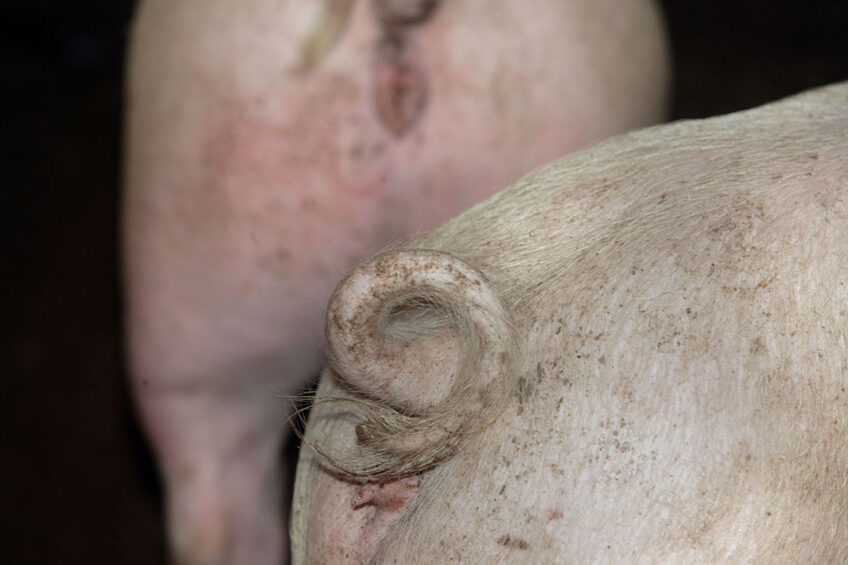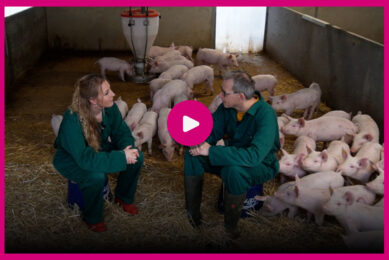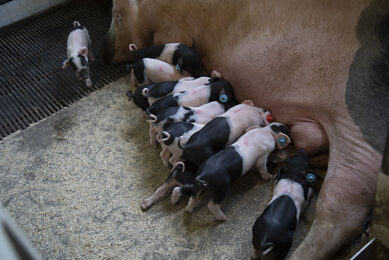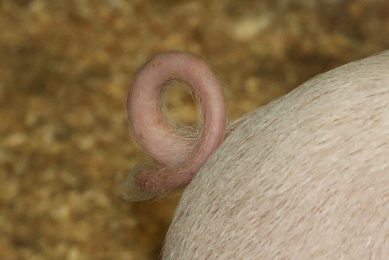What is the connection between undocked tails, lesions and ulcers in pigs?

Researchers from Italy explored tail, lungs, pleurae, liver, stomach, carcass and thigh lesions in finishers from either conventional docked batches or high-welfare standard batches from farms with a complete ban on tail docking.
The team, consisting of researchers from the University of Torino and the University and Padova, published their findings in the peer-reviewed journal Animals.
The team collected their data for a period of 9 months in an Italian pig slaughterhouse. Trucks transported the pigs to the slaughterhouse in batches of 130 to 140 animals reared on the same farm. In each batch, the researchers selected an average of 100 animals for the evaluation. They evaluated 525 batches (52,500 animals) from intensive systems, and 442 batches from conventional farms adopting tail docking procedures, including short-docking, long-docking, or tipping. They also evaluated 83 batches from high-welfare standard farms with a complete ban on tail docking.
The slaughter line speed was 480 pigs per hour and the inspection was performed directly during the slaughter course for approximately 6 to 8 seconds. The team inspected lungs (mycoplasma-like lesions), pleurae, liver, and heart were inspected from a platform placed after the evisceration area. They evaluated skin lesions using a 3-point scoring system.
score 0, up to 1 scratch or bite;
score 1, from 2 to 5 scratches or bites;
score 2, more than 5 scratches or bites, or any wound which penetrates the muscle.
In addition, esophago-gastric ulcers were classified using a 4-point scale:
0 = healthy,
1 = hyperkeratosis,
2 = erosion and/or mild ulcer,
3 = severe ulcer. In addition, one day after slaughter, all the separated thighs (hams) were individually evaluated for defects.
Lesions observed in the slaughterhouse
This study showed the importance of the slaughterhouse as an investigation center, not only for notifiable disease or health disorders, but also for various kinds of lesions and animal welfare. Fresh and chronic tail lesions were recorded in 44% of pigs with undocked tails compared to 0.2% of pigs with docked tails, with a prevalence of 27.3% for severe chronic lesions.
Tail-docked pigs on the other hand showed more frequent ear lesions than undocked pigs suggesting a substitution effect between tail and ear biting. The proportion of lesions in undocked lighter pigs was larger than undocked heavier pigs ranging from 72.5% to 20-30% due to the unpredictable and multifactorial origin of tail biting. In addition, older pigs were less likely to show tail lesions. Furthermore, the length of the tail after tail docking including short-docked, long-docked, or tipped might be responsible for different degrees of prevalence.
Lungs
Lungs are one of the organs most frequently affected by infection after the onset of a tail lesion. Severe pulmonary mycoplasma-like lesions, gastric ulcers, and milk spot lesions in liver were found more frequently in undocked pigs. However, the pathogenesis of mycoplasma-like lesions is unrelated to tail lesions suggesting that tail biting and mycoplasma-like lesions share similar risk factors. A higher frequency of gastric ulcers in undocked pigs suggests that physical injuries such as tail biting may cause a release of histamine after an inflammation process, resulting in an increasing prevalence of gastric ulcers. Moreover, the team found no difference for the pleura, skin lesions other than ears, and ham defects. The absence of differences in the frequency of ham defects in pigs with undocked tail reassures the market about the ban of tail docking.
Conclusions
The authors concluded that the higher prevalence of tail lesions in undocked tails suggested that more and alternative efforts to manage animals with undocked tails are necessary for a more acceptable and welfare-friendly farming system.
The article in Animals was authored by Annalisa Scollo, and Mustansar Abbas from Department of Veterinary Sciences, University of Torino, Italy; and Barbara Contiero, and Flaviana Gottardo from Department of Animal Medicine, Production and Health, University of Padova, Italy.











